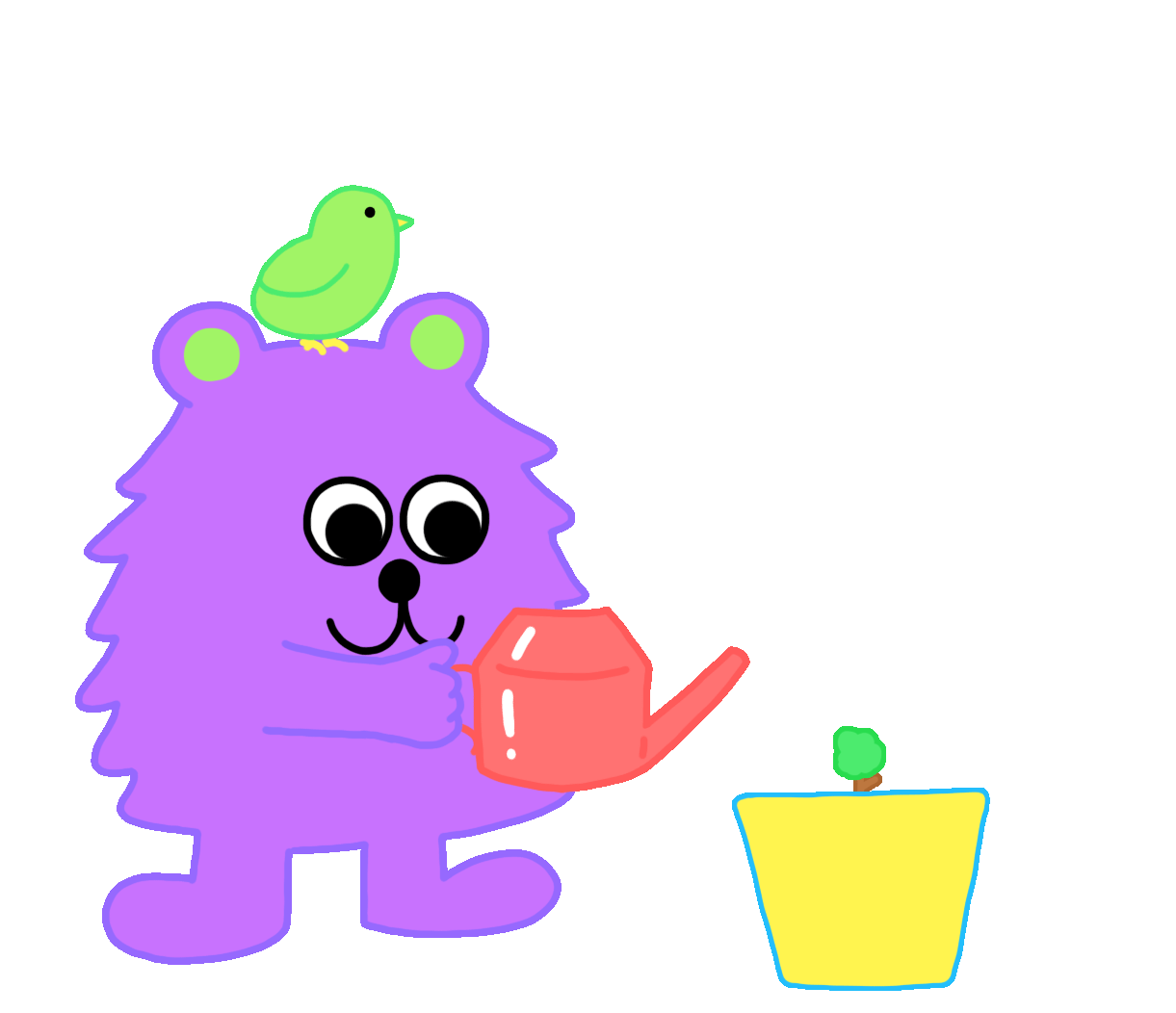TXT × MBTI
MBTI from A to (Gen) Z, feat. TXT





Whenever TOMORROW X TOGETHER’s MBTI comes up, it’s often accompanied by phrases like “epic MBTI moment” and “TOMORROW X TOGETHER’s MBTI is a science.” They’re usually said when the members exhibit the characteristics typical of each type, like when introverted (“I”) SOOBIN is standing by himself or sitting out while the other, more extroverted (“E”) members run around excitedly. Another example was on SBS’s MMTG, when the members were asked, “How do you react to the advice [of] ‘quit your job if you’re not good at it’?”: While all the F (for “feeling”) members looked hurt and one raised his fist, TAEHYUN, the only T (“thinking”) member calmly followed up with, “Which part?” In a V LIVE titled “Ubbuz (BEOMGYU, TAEHYUN),” BEOMGYU (an F) and TAEHYUN (a T) held a Q&A session on the differences between Fs and Ts. People also made mention of the members’ MBTI types in their answers to two questions that swept through the idol community: the so-called butt debate (as to whether humans have one or two of them) and the perilla leaf debate (which asks whether it’s okay for your partner to help your friend separate the leaves when they stick together at the dinner table). Fans compiled all the answers and reactions from each TOMORROW X TOGETHER member, split them up by MBTI types like S, N, T and F, and shared them on YouTube and across social media, which in turn led to the creation and evolution of various memes and videos about the group’s MBTI differences by fans and even the members themselves, with fans actively using them to help themselves better understand what makes each member tick.
It's obvious that MBTI is a trend in Korea: Just try googling “why MBTI” and it’ll automatically suggest “why MBTI is popular in Korea” to you. But while the MBTI test provided at the website 16Personalities, which people often take so they can share their results on social media or understand the distinction between different types, has become ubiquitous online, it only borrows its types from the official MBTI test and isn’t a formally recognized test itself. None of the questions asked on the 16Personalities test are in any way formal, and the way in which users select their answers is different from the official MBTI test. In a formal assessment, the person being evaluated is presented with two words or phrases and is tasked to choose one, while the test on 16Personalities using a Likert scale, which allows the user to choose how much they agree or disagree with a statement on a scale ranging from one to seven. Nevertheless, this unofficial MBTI test found popularity among people in their teens and 20s thanks to its simple testing method and the ease with which the results can be shared via social media, plus the website’s plethora of post-test content. As a reflection of this explosive interest, people started guessing the MBTI of cartoon and TV characters, and the production companies themselves even went so far as to add MBTI information to the characters’ biographies. Users of social media started to classify others’ reactions according to their possible MBTI types—for example, when having a fight, struggling with unrequited love or feeling angry—or rank which MBTI types they believed would lead to success, match their own personalities or make for bad people. One company started to ask that applicants submit their MBTI results from 16Personalities when applying for a job with them, while another got in trouble for limiting which MBTI types they’d even consider. Contrary to the original intention behind MBTI—that all types hold equal value—people started to reveal preferences for certain MBTIs or rank them, either for fun or because they misunderstood the system based on the prejudices perpetuated by the people who ranked them first.
As to the reason why MBTI is trending among these young people, Kim Jae-hyung, head of the research department at the Korea MBTI Institute, says the reason is that, “in a lot of cases, people in their teens and 20s today already have experience with taking formal MBTI tests at school, so it’s a tool they’re not adverse to” using. Psychiatrist Dr. Oh Jinseung views MBTI as a reflection of the inter- and intrapersonal needs of people in modern times who, “whether they’re at the point in their life where they’re going to school or working,” feel like they “missed the opportunity to get to know themselves in their early 20s through meeting new people as a result of the social severance and isolation caused by COVID-19,” and that they can try to understand themselves better by taking MBTI tests “when they feel like they’re different and there’s no one else like them. … At any rate, perhaps it’s because they feel secure in knowing they belong to one of 16 different types.” It should come as no surprise, then, that many fans also use MBTI as a means to better understand the artists they like. Even if they don’t take it seriously, once they know the MBTI type of those artists, they “might find some relief from the uncertainty and anxiousness they possibly feel not knowing what kind of person that other person is or about their personality or why they behave the way they do.”












The members of TOMORROW X TOGETHER took the official MBTI test when they were trainees and their types were later written on the VR version of the concept photos for their second mini album, minisode 1: Blue Hour: YEONJUN and HUENINGKAI are ENFPs, a type with a certain “spark” to them and who love to make new friends; SOOBIN is an ISFP, who are warm, saintly types; BEOMGYU is an ENFJ, making him an excellent speaker, cooperator, and concerned with the growth of others; and TAEHYUN is an ESTP, or someone with a diverse set of interests who’s good at everything they do. Each of the four letters in an MBTI stands for one of two polarized personality traits: where you focus your energies (E for extroversion or I for introversion), how you handle information (S for sensing or N for intuition), your decision-making process (T for thinking or F for feeling) and the way you structure and live your life (J for judging or P for perceiving). From there, the results combine to give you one of 16 different types. According to Kim, for many people, “when they see the opposites, they tend to tack ‘non-’ or ‘un-’ to the front” of each trait, but, in essence, they all exist on a horizontal line. Thinking (“T”), for example, is characterized by being logical, but its opposite, feeling (“F”), is about the situational, not anything about being illogical. Rather than being in conflict, these polar opposites can be understood as the preferences that make a person feel most comfortable.










HUENINGKAI got ENFP when he took the official MBTI test, but the 16Personalities results he shared on Weverse on July 31, 2020 said he was an INFJ and an ENFP, and then at the Weverse “fan signing” event he said it changed again, this time to ISTP. Despite this, the official test is rooted in the premise that the results are unchanging because it looks at innate predispositions. Kim says this could be the result of “someone who used to be a feeler (‘F’) who comes to appreciate the logical/objective/analytical thinking (‘T’) process and becomes a better person who’s capable of dealing with things objectively.” Through varied experiences and by learning to appreciate other traits, a person is continuously “becoming” a better version of themselves. The ultimate goal in life, according to the official MBTI test, isn’t to become a completely different type of person but to be a better version of yourself by embracing even the extremes of your personality traits.

To look at this another way, even if not taking a proper MBTI test, the continuously changing results may nonetheless “be thought of as a change in mindset or behavior rather than in personality,” according to Dr. Oh. He offers the following alternative instead: “Instead of thinking of that change as being good or bad, you might learn to understand your personal situation if you’re curious about the underlying cause of the changes to your way of thinking and in the things you find to be important.” In other words, instead of simply fixating on the reliability of the test results or feeling suspicious of your own capriciousness, people should take the time to look inward and find the origin of the change. Oh also suggests the “look at it another way” approach: What may seem like a poor or even outlandish response to some may very well have been done in an effort to overcome a difficult situation in their own way, if you “look at it another way.” In other words, if people trace the reasons behind why they felt compelled to act exactly as they did, and the thoughts that lead to that conclusion, they “can understand themselves a little better.” Kim, meanwhile, looks at MBTI like seeds. “We don’t know what kind of flowers or trees will grow from the seeds, and we don’t make rash judgments about which of the various kinds of trees that grow from them are best.” From this perspective, it is important to note that the environment in which the seeds, or MBTIs, are cultivated is not indicated by the four elements of an MBTI type. If we are to understand any one individual, then, we must proceed with an attitude of understanding the demands placed on them by society and the way the individual is accepted in it, as well as any situations they’re up against, rather than the MBTI traits we expect to see revealed through their actions.




To clarifying things through example, Kim explains that “working in Korea requires the J (judging) type, not the P (perceiving) type,” and that “someone who is good at making plans may actually have a hard time living like they are a J type, but the types can’t explain that.” Oh notes that people may also try too hard “to hide hypersensitivity or anxiety” or put on a persona “to meet the demands of a given role or job with professionalism.” When people do this, they can focus on what it was in their past that made them to be the type they are, or focus their efforts on accepting the opposite trait in order to achieve something, rather than simply accepting some outcome by saying, I got J, so I must be pretty good at planning, or, I’m an E, so I must be energetic. SOOBIN, the leader of TOMORROW X TOGETHER, is the only introvert (“I”) in the group, for example, and as such is relatively reserved and quiet, but at the same time, his role as an artist means he gets up on stage in front of huge audiences, wields the microphone and publicly voices his thoughts and feelings because he’s the leader, and has interviewed many other artists as the former host of KBS2’s Music Bank. Kim suggests that, when we see SOOBIN being “energetic on stage and in interviews but he tests as introverted (‘I’),” that we would do well to recognize “he must be trying really hard for the sake of their fans and their career.” We can give him our encouragement and support him for the professionalism that he shows as when he dutifully performs his role, be it artist, leader or host—an effort which stems from his attempts to accept the opposite, extroverted side of himself, for the sake of his fans.





The MBTI test is therefore not a tool for finding what makes you better than other people but what your predispositions are. The real value of MBTI, then, is in understanding that, though you may have certain preferences, you can still understand how someone else can have preferences that differ from your own and the need for you to respect that. MBTI types are innate in the way a seed is, and through tests and experiences people can, in Kim’s words, move on from interpreting their results to mean, “I think this one thing is really good and comfortable and I like living this way,” to realizing, “I need to respect the things others like, too. … One of the mottos shared among MBTI academics is to make a world of differences [and MBTI seeks] to create and coexist in a diverse world together,” he adds. “So the test is really about looking into the ways we’re all different.”
And when those five boys, each with their own MBTI types and assigned roles to play, whether based on age or leadership status, come together, they form that group we call TOMORROW X TOGETHER. YEONJUN, the oldest member, and HUENINGKAI, the youngest, like to express their (to some, potentially absurd) novelty and uniqueness on the stage, but when they are offstage, they try to please the fans or other members as much as possible. And TAEHYUN, the second-youngest, looks for the funny side of each moment and never hides what he’s thinking. True to ENFJ’s tendency toward harmony, BEOMGYU organizes things so the group is able to get through the day’s appointments and keeps everyone in balance. And SOOBIN, their leader, is there to support all of them, even when it isn’t obvious. Dr. Oh explains that people generate better synergy when a team uses MBTI insight to understand and then get good use out of everyone’s differences without making any assumptions about what any one individual is capable of. “When people with distinct ideas comes together and keep moving, come up with new ideas, and each see things the others can’t, they can achieve better results.”


“We went through the sort of minor conflicts that any emotional and logical people will normally have with one another,” TAEHYUN said in a previous interview with Weverse Magazine. “I like being efficient and focus on how to achieve good results, but later on, I realized that a good result isn’t always the point.” As the sole T in the group, he said, he mastered how to work himself in with the others and mediate conflicts between them. According to Kim, TAEHYUN is showing an example of “coming to be able to use language so that he will be understood by someone else once they discover what their type is.” MBTI alone isn’t a complete solution for conflict resolution, but if you use it as one tool in your arsenal, it can help make communication easier: You can change your choice of words to those that are more comfortable for the person you’re speaking to to hear, helping them to understand you better, and, by the same token, you can understand what they’re saying to you and avoid misinterpreting their intended meaning.

Just like TOMORROW X TOGETHER’s name suggests, MBTI also teaches us how to live as your true self for tomorrow and together with others, even those who are different from us. MBTI tests allow us to determine not what is best, but what is better for each of us personally, and from here we can acknowledge the differences between ourselves and the people whose preferences differ from our own—just like how, in the lyrics to “Blue Orangeade,” the speaker realizes they “got a thing for blue sea,” but still accepts that “you like red roses.” Even if many people, each with their own MBTIs, might feel strange to each other like in the song, they can still accept that those total opposites are what make life all the more special (“We’re the complete opposite / That’s why it’s even more special”). Can the world, then, keep moving forward into a tomorrow where there’s respect for all, just the way we all are, without any prejudice or reservations?